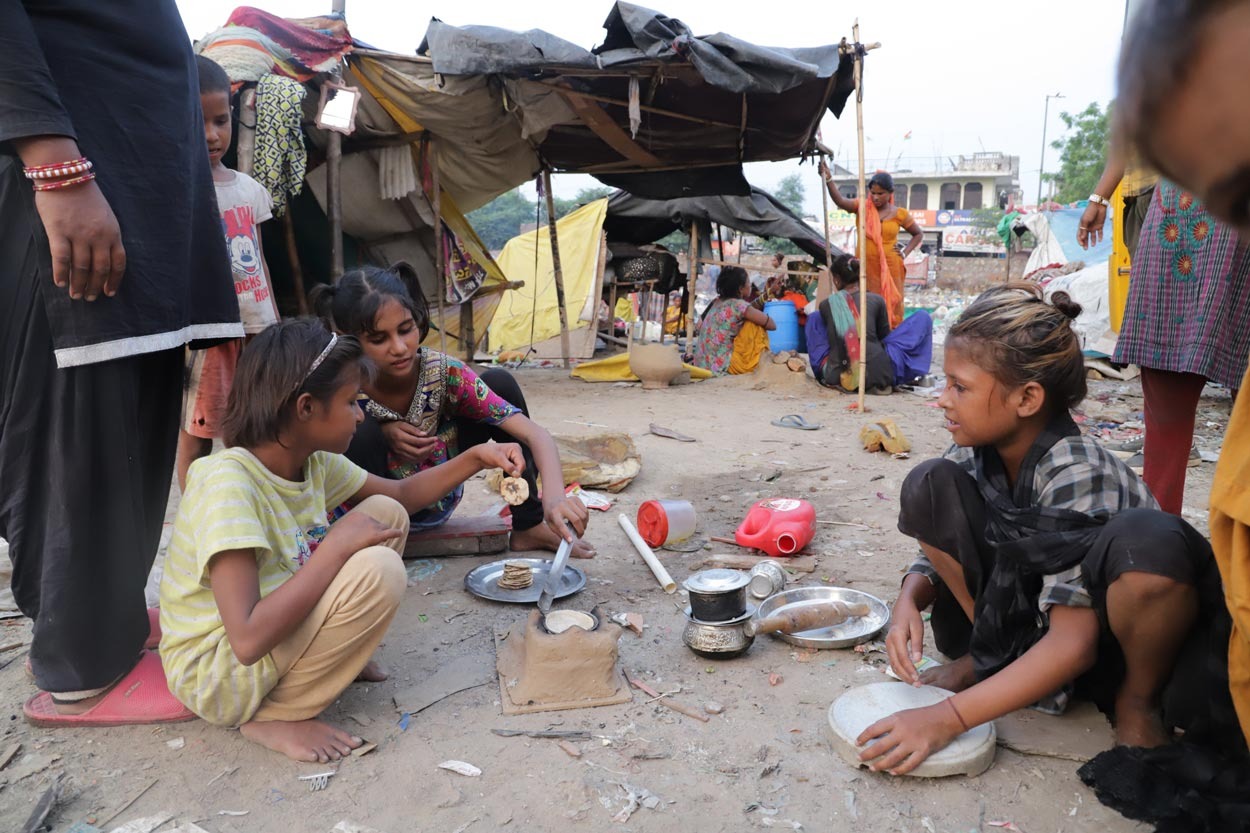Pandemic heaps more hardship on street children
Wearing a worn-out pair of shoes that are too big for his feet and no clothes on his body, 6-year-old Raja plays with a toy dog given to him by an NGO about a week ago.
Beside Raja, stands 7-year-old Puja, his sister, eagerly waiting for her turn to play with the toy. Puja, wearing a tattered yellow dress, also has her youngest sister, 2-year-old Archana in her lap, who like Raja, is not wearing any clothes. Being the eldest sibling, Puja says she is very protective of her younger sister and says that she will protect her and make sure that she has clothes to wear when she grows up. “She can wear my clothes when she grows up. I can share my clothes with her because she is a girl. My brother cannot wear my clothes,” she explains.
As three of them get busy playing, their parents continue to fight with a policeman who asks them to vacate the area under the Nehru Place flyover, which has been their dwelling place for over three years now. “During the lockdown last year, these policemen came here and asked us to go to some shelter-home almost every week from April to October, but all nearby shelters were full and we had no place to go. So we continued to stay here and they stopped asking us to move eventually,” says Babita, 33, mother to the three children.
Babita remembers how difficult it was for them to survive with barely a meal every day for about four months while government had imposed lockdown and they had no work. Even people stopped providing them with food as movement was restricted. “People had stopped giving us food, clothes and we consider ourselves lucky to have survived the lockdown and harsh winters last year. I do not think I have the courage to do it all over again. We pick rags, separate plastic bottles and sell it to a recycling shop. If it closes down again or a lockdown is imposed, we will starve to death. I will not be able to feed my children too. My youngest daughter keeps falling sick due to malnourishment,” she explains.
Raja, Puja and Archana are but only three of the 15 children who live under the Nehru place flyover in the southern part of the national capital. One can see a number of them, begging or playing under this flyover, at any time of the day, throughout the year.
Delhi alone has about 150,000-200,000 homeless people, out of which at least 20,000 are children, said to be the highest in the world. According to the patchy data available, India still has more than 1.7 million homeless people, of which 938,384 are located in urban areas. There is almost no data available on the government website, specifically on the number of children on streets as their names are not registered anywhere in the official records.
According to Save The Children, an NGO that works for the rights of homeless children, 50.5 pc of all street children in India are illiterate. 87 pc earn a living, of which 20 pc are rag-pickers, 15.8 pc are street vendors and 15 pc earn by begging on traffic signals. The NGO also says that over 50 pc have suffered verbal, physical or sexual abuse.
Working street children are most vulnerable to exploitation and abuse. Employers force these children to work for long hours, without food, without providing any safety equipment, and for abysmally low wages as the children are not aware of their rights, says the NGO. Worse, studies have shown that boys and girls on the street are particularly vulnerable to sexual abuse by strangers, adult street dwellers and at times by the police too.
With the second wave of Covid-19 rapidly spreading across the nation, chances of fresh wave of lockdowns in India are rising, as several states have already imposed week-end lockdowns as well as night curfews to restrict movement of people. While the restrictions take a toll on the entire population of the country, their impact on the homeless, especially the children, is the harshest. “Lockdowns and social distancing have untold effects on street children who cannot afford the economic cost of forced immobility, since their livelihood depends on informal street activities,” says Kusum Mehta, a member of Save The Children.
“Forced immobility in response to Covid-19 deepens the vulnerability of the already vulnerable street children in India and, I am sure, in all other parts of the world, especially in all developing countries like ours,” she adds.
Apart from the chances of another lockdown, she also points out that the summer will also be tough for the children. “Surviving the heat is not a new thing for these children but this time, it is going to be dreadful as they will not be allowed to stay under the shade of houses nearby while they beg in afternoons. People will also not offer water to them. For you and me, this may not be a big problem, but, for them, who beg all day long under the scorching sun, this may become a question of survival,” explains Mehta.
According to Aakanksha Singh, another member of the NGO, during a pandemic, preserving, protecting and promoting a child’s right to health is, and must be, a priority for everyone as they are the worst sufferers of any calamity, but rarely acknowledged by the government.











